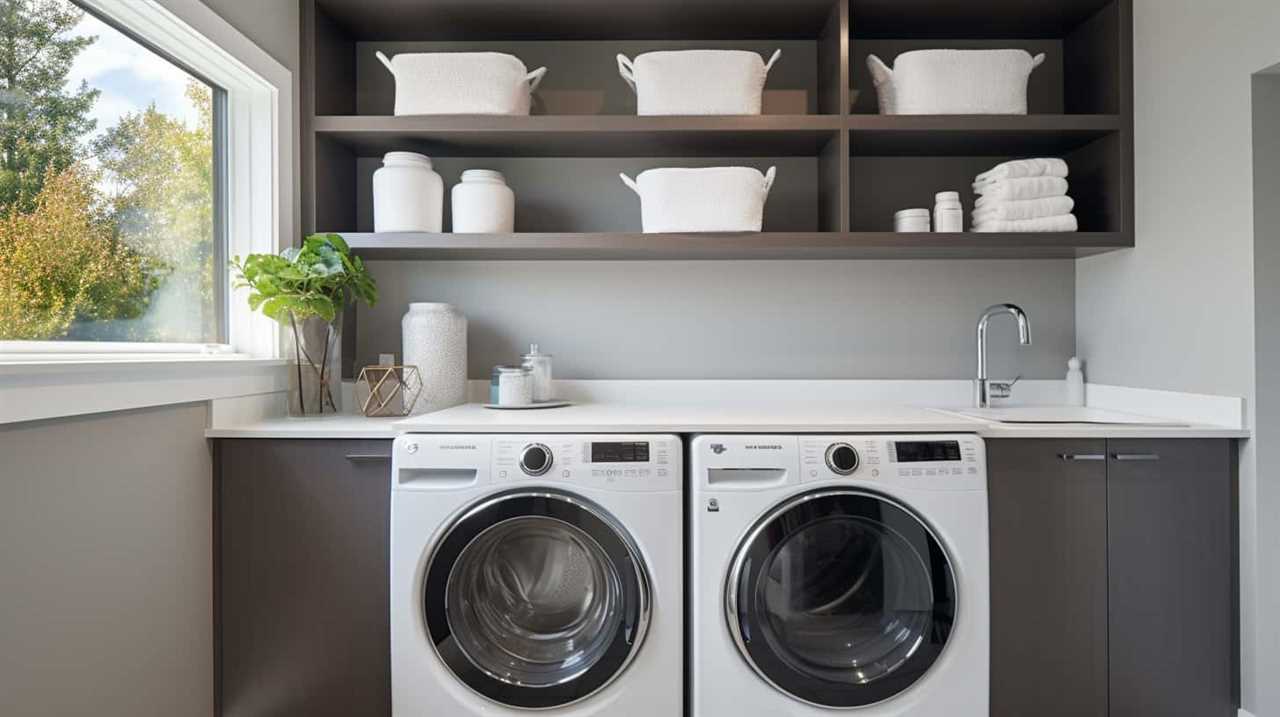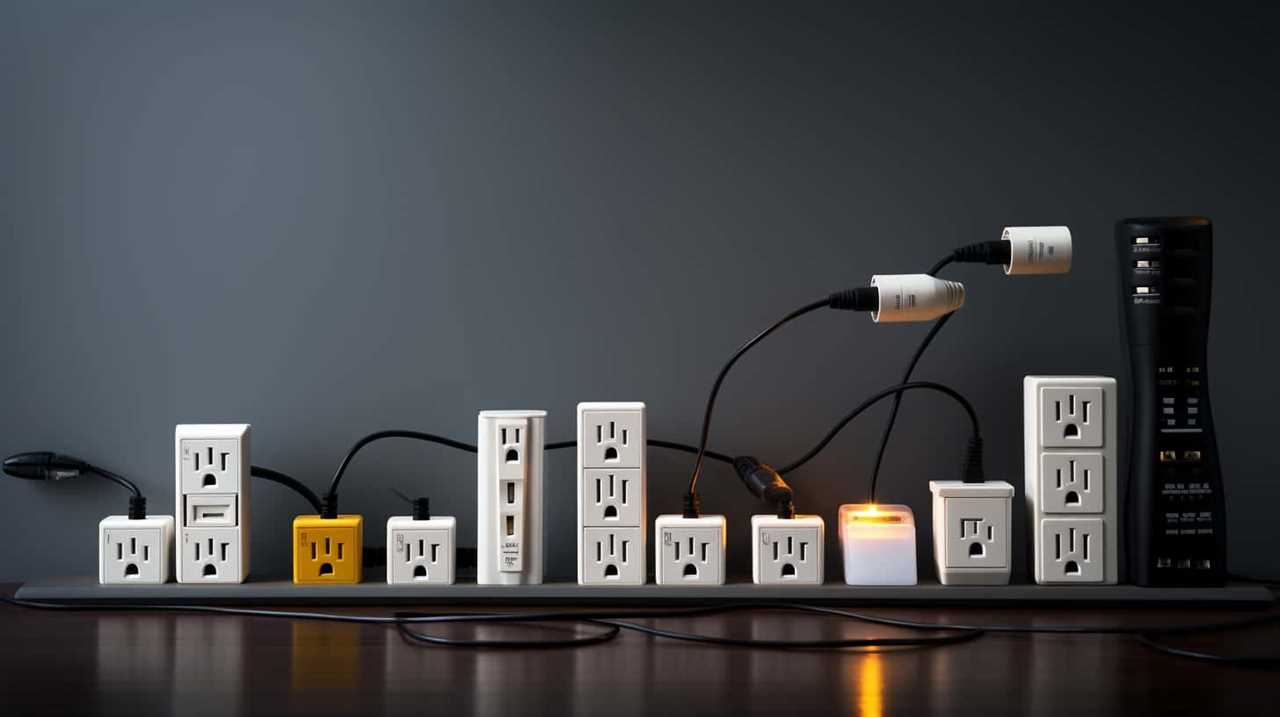We all aim to conserve energy and lower our electricity expenses. However, how can we make informed decisions about our appliances? This is where appliance energy ratings become valuable.
In this article, we’ll explain what appliance energy ratings are, how they are measured, and why they are important. We’ll also address common misconceptions and provide tips on how to read and interpret energy labels.
So, let’s dive in and master the world of appliance energy ratings!
Key Takeaways
- Appliance energy ratings provide valuable information about the efficiency of different appliances.
- Understanding appliance energy ratings helps us make smarter choices and contribute to a more sustainable future.
- Factors such as size, design, and features can affect the energy ratings of appliances.
- Energy-efficient appliances have benefits like lower utility bills, reduced environmental impact, and increased lifespan.
What Are Appliance Energy Ratings
Appliance energy ratings provide us with valuable information about the efficiency of different appliances. These ratings are essential for anyone who wants to make informed decisions about their energy consumption.

By analyzing energy saving benefits and conducting energy consumption analysis, we can determine which appliances are the most efficient and cost-effective. Energy saving benefits refer to the amount of energy that can be saved by using a particular appliance compared to others. This information is crucial for reducing energy usage and lowering utility bills.
Energy consumption analysis allows us to assess how much energy a specific appliance consumes over time. By understanding these ratings, we can make smarter choices and contribute to a more sustainable future.
How Are Appliance Energy Ratings Measured
When it comes to measuring appliance energy ratings, there are specific testing procedures that are followed. These procedures ensure that the energy efficiency of appliances is accurately assessed.
Additionally, there are various factors that can affect the energy ratings of appliances, such as the size, design, and features.

Testing Procedures for Ratings
To understand how appliance energy ratings are measured, it’s important to consider the testing procedures used. These procedures are designed to ensure accuracy and consistency in determining the energy efficiency of appliances. Here are four key steps involved in the testing process:
- Test setup: Appliances are placed in controlled environments that simulate real-life conditions. This includes temperature, humidity, and usage patterns.
- Data collection: Various measurements are taken, such as energy consumption, power usage, and operating time. These data points are collected over a specified period to obtain accurate results.
- Calculation: Using the collected data, energy efficiency is calculated by dividing the energy consumed by the appliance by its performance in a specific task, such as cooling or heating.
- Compliance: The obtained energy efficiency value is compared against energy efficiency standards set by regulatory bodies to determine the appliance’s rating.
Factors Affecting Energy Ratings
During the measurement of appliance energy ratings, factors such as the efficiency of energy usage and the overall performance of the appliance are taken into account. These factors directly impact the energy consumption of the appliance and play a crucial role in determining its energy rating.
The efficiency of energy usage refers to how effectively the appliance converts energy into its intended output. Appliances with higher efficiency are more energy-efficient and therefore have lower energy consumption. The overall performance of the appliance includes factors such as its design, technology, and features that contribute to its energy consumption.
Energy-efficient appliances have several benefits, including lower utility bills, reduced environmental impact, and increased lifespan of the appliance. By considering these factors, appliance energy ratings provide consumers with valuable information to make informed choices and contribute to a more sustainable future.
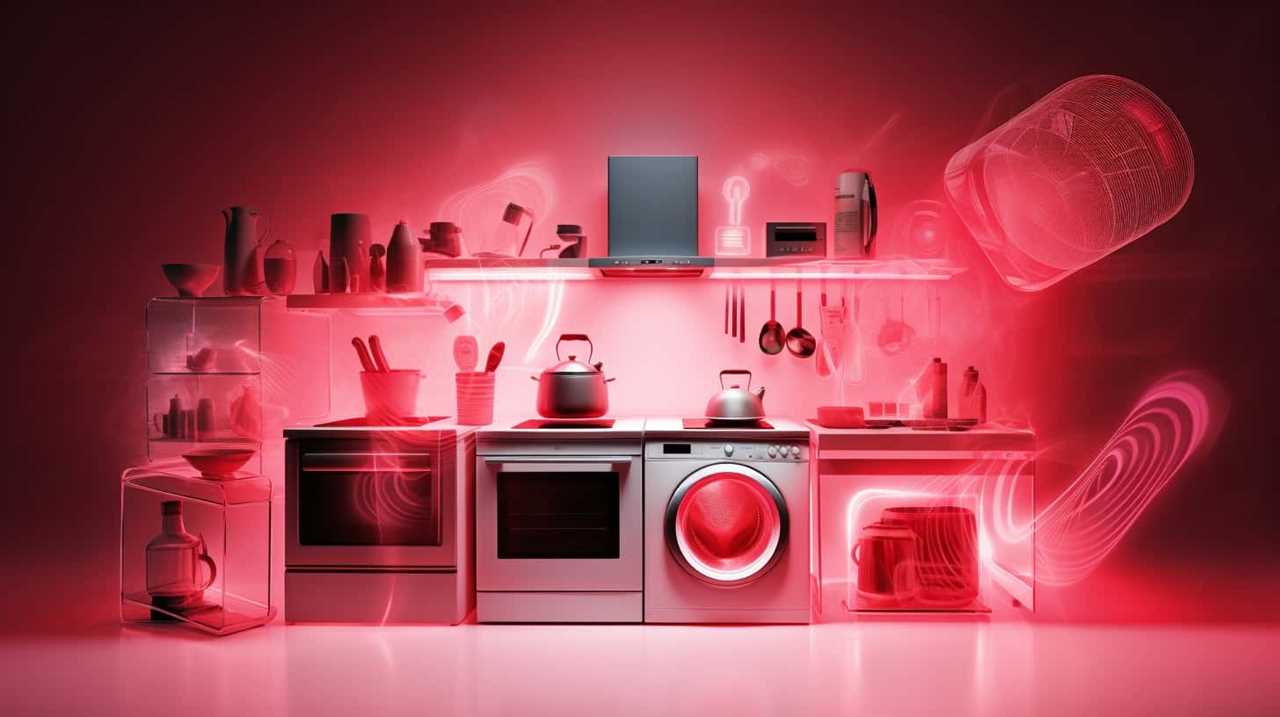
Comparing Appliance Efficiency
In comparing appliance efficiency and how appliance energy ratings are measured, we take into account the factors discussed in the previous subtopic. When comparing energy usage, it’s important to consider the following:
- Energy consumption: This refers to the amount of energy an appliance uses to perform its intended function. The lower the energy consumption, the more efficient the appliance is.
- Energy efficiency rating: This rating provides a standardized measure of an appliance’s energy efficiency. It allows consumers to compare the energy performance of different appliances easily.
- Annual energy cost: This indicates how much it will cost to operate the appliance over a year. Appliances with lower energy costs are more energy efficient and can result in significant savings over time.
- Environmental impact: Energy efficient appliances help reduce greenhouse gas emissions and conserve natural resources, contributing to a more sustainable future.
Understanding appliance efficiency and energy ratings is essential for making informed purchasing decisions and reaping the benefits of energy-efficient appliances.
Transitioning into the next section, we’ll now delve into understanding energy consumption and efficiency.
Understanding Energy Consumption and Efficiency
When it comes to understanding energy consumption and efficiency, we rely on appliance energy ratings to guide our choices. These ratings provide valuable information about the energy usage of appliances, helping us make informed decisions to reduce our energy consumption.
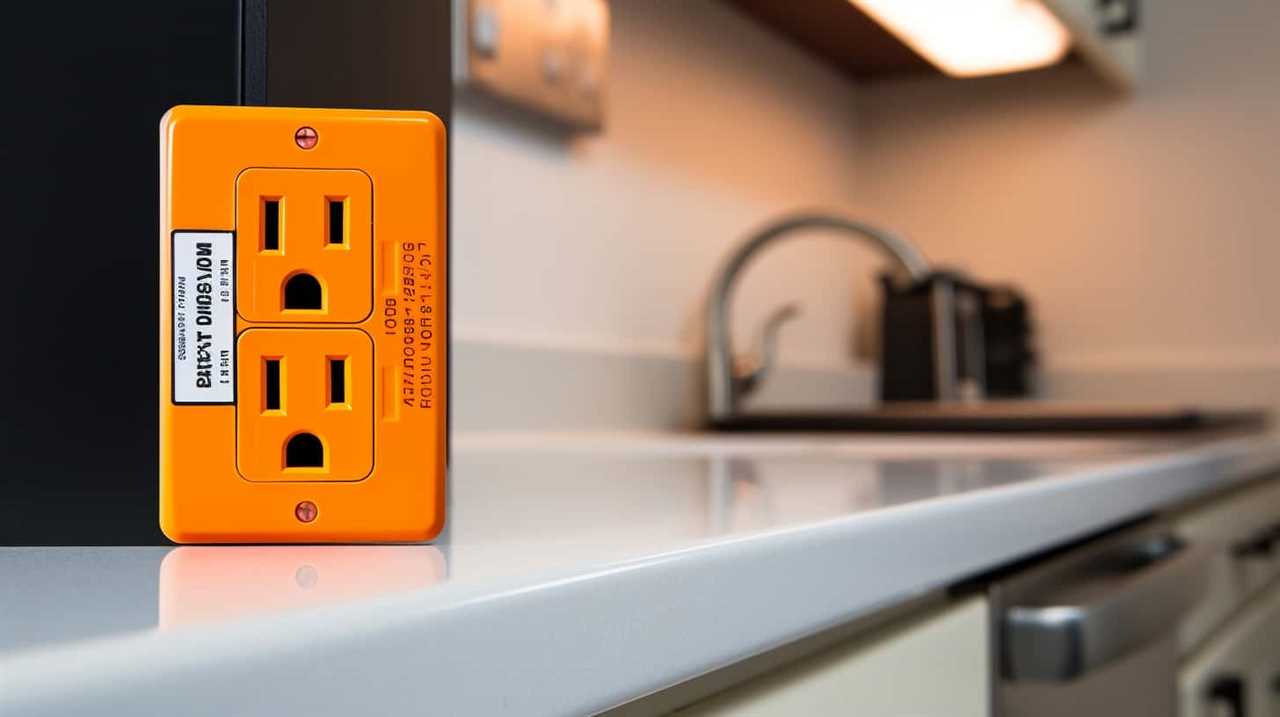
By selecting appliances with higher energy efficiency ratings, we can significantly save on our energy bills and reduce our overall environmental impact.
To further reduce energy consumption, there are a few energy-saving tips to keep in mind. Firstly, using appliances during off-peak hours can help minimize energy demand. Secondly, ensuring proper insulation and sealing of windows and doors can prevent energy loss. Lastly, opting for energy-efficient light bulbs and turning off lights when not in use can also make a significant difference.
The Importance of Energy-Saving Appliances
To fully understand the significance of energy-saving appliances, we must recognize their role in reducing energy consumption and promoting sustainability. Energy-saving appliances offer numerous benefits that contribute to a more sustainable way of living. Here are four key reasons why energy-saving appliances are important:
- Reduced Energy Consumption: Energy-saving appliances are designed to use less electricity, resulting in lower energy bills and reduced overall energy consumption.
- Environmental Impact: By using less energy, these appliances help decrease greenhouse gas emissions, mitigating the negative impact on the environment.
- Long-Term Cost Savings: Although energy-saving appliances may have a higher upfront cost, their lower energy consumption leads to significant long-term savings on utility bills.
- Sustainable Living: Investing in energy-saving appliances aligns with the principles of sustainable living, reducing our carbon footprint and preserving natural resources for future generations.
Energy Ratings and Cost Savings
When it comes to energy ratings and cost savings, understanding energy-efficient appliances is key. These appliances are designed to consume less energy while providing the same level of functionality.
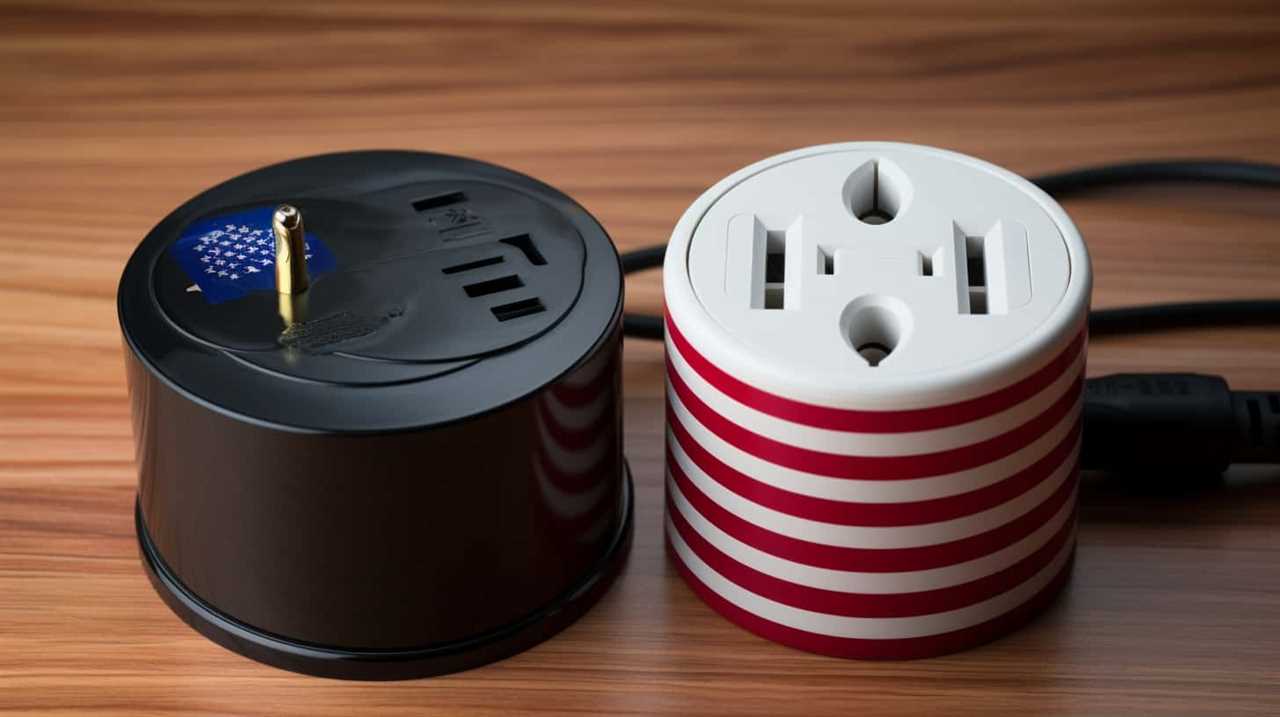
Energy-Efficient Appliances Explained
As we delve into the topic of energy-efficient appliances, it’s important to understand the significance of energy ratings and the potential cost savings they can provide. Energy-efficient technology has revolutionized the way appliances consume power, offering numerous energy saving benefits. Here are four key points to consider:
- Energy ratings: Energy ratings, such as the Energy Star label, provide a standardized measure of an appliance’s energy efficiency. This allows consumers to compare products and make informed choices.
- Cost savings: Energy-efficient appliances can significantly reduce utility bills over time. By consuming less electricity, these appliances help lower energy expenses, resulting in substantial cost savings.
- Environmental impact: Energy-efficient appliances help reduce carbon emissions and minimize the ecological footprint. By conserving energy, they contribute to a healthier and more sustainable environment.
- Long-term investment: Although energy-efficient appliances may have a slightly higher upfront cost, the long-term savings in energy bills make them a worthwhile investment. They not only save money but also increase the value of a home.
Long-Term Financial Benefits
By prioritizing energy ratings and cost savings, we can reap long-term financial benefits from energy-efficient appliances. Investing in appliances with high energy ratings can lead to significant long-term savings on utility bills. These savings can be substantial when considering the lifespan of appliances, which can range from 10 to 20 years. To illustrate the potential cost savings, let’s consider an energy consumption analysis for three common household appliances: a refrigerator, a washing machine, and a dishwasher. The table below compares the annual energy consumption and estimated cost for each appliance, based on average usage and energy ratings.
| Appliance | Annual Energy Consumption (kWh) | Estimated Annual Cost ($) |
|---|---|---|
| Refrigerator | 350 | $42 |
| Washing Machine | 400 | $48 |
| Dishwasher | 300 | $36 |
As we can see, opting for energy-efficient appliances can result in significant long-term savings. These savings accumulate over time, making it a wise financial decision to prioritize energy ratings when purchasing appliances. Furthermore, reducing energy consumption also benefits the environment by reducing greenhouse gas emissions. In the next section, we will delve into the environmental impact of appliance energy ratings.
Environmental Impact of Ratings
To fully understand the environmental impact of appliance energy ratings, it’s important to regularly consider the energy efficiency of our appliances. By choosing appliances with higher energy ratings, we can contribute to environmental sustainability and reduce our carbon footprint.

Here are four key ways in which appliance energy ratings have a positive environmental impact:
- Energy savings: Appliances with higher energy ratings consume less electricity, resulting in lower energy consumption and reduced greenhouse gas emissions.
- Water conservation: Many appliances, such as washing machines and dishwashers, have water efficiency ratings that indicate their water consumption. Choosing appliances with higher water efficiency ratings helps conserve this precious resource.
- Waste reduction: Energy-efficient appliances are built to last longer and require fewer repairs or replacements, reducing the amount of electronic waste generated.
- Renewable energy integration: Energy-efficient appliances are better equipped to utilize renewable energy sources, such as solar power, which further reduces reliance on fossil fuels.
Considering the environmental impact of appliance energy ratings is crucial in our pursuit of a sustainable future. By making informed choices, we can play our part in protecting the planet.
The Impact of Appliance Energy Ratings on the Environment
How do appliance energy ratings affect our environment?
The impact of appliance energy ratings on the environment is substantial. Consumer awareness plays a crucial role in reducing energy consumption and mitigating climate change. Energy ratings provide valuable information about the energy efficiency of appliances, allowing consumers to make informed choices that can significantly reduce their carbon footprint.

Energy-efficient appliances consume less electricity, resulting in lower greenhouse gas emissions. By choosing appliances with higher energy ratings, consumers can save energy and reduce their impact on climate change.
Additionally, energy ratings promote the development and adoption of more sustainable technologies, leading to further environmental benefits. Therefore, understanding the connection between energy ratings and climate change is essential for consumers to make environmentally responsible choices and contribute to a greener future.
Energy Ratings and Government Regulations
Discussing energy ratings and government regulations, we recognize the importance of implementing and enforcing standards to ensure energy efficiency in appliances. Government regulations play a crucial role in promoting the use of energy-saving appliances. Here are four key reasons why government regulations are essential in this process:
- Energy conservation: Government regulations provide guidelines and requirements that encourage manufacturers to produce energy-efficient appliances, reducing overall energy consumption.
- Environmental protection: By promoting the use of energy-saving appliances, government regulations help reduce greenhouse gas emissions and mitigate the impact of climate change.
- Cost savings: Energy-efficient appliances not only save energy but also save consumers money on their utility bills in the long run.
- Market transformation: Government regulations encourage innovation and competition among manufacturers, leading to the development of more energy-efficient appliances.
Understanding the role of government regulations in promoting energy efficiency is crucial when choosing the right energy-efficient appliances.

Choosing the Right Energy-Efficient Appliances
When selecting energy-efficient appliances, we prioritize finding the most efficient options available. Choosing energy-saving models offers numerous benefits, both for the environment and for our wallets.
Energy-efficient appliances consume less electricity, reducing greenhouse gas emissions and conserving natural resources. These appliances also help to lower utility bills, as they require less energy to operate.
When choosing energy-efficient appliances, it’s important to consider their energy rating. Look for appliances with the highest energy rating, such as ENERGY STAR certified products, as they’ve been tested and proven to be highly efficient. Additionally, consider the specific features and functions of the appliance to ensure it meets your needs while still being energy-efficient.
Common Misconceptions About Appliance Energy Ratings
One common misconception about appliance energy ratings is that they’re solely based on the overall size and appearance of the appliance. However, there are several other factors that contribute to the energy rating of an appliance.

Here are some common misconceptions about appliance energy ratings:
- Energy ratings only consider the size and appearance of the appliance.
- Energy ratings don’t impact the performance or functionality of the appliance.
- Energy ratings aren’t important because they don’t save much energy.
- Energy ratings aren’t reliable and can be easily manipulated by manufacturers.
It is important to understand the benefits of energy ratings to make informed decisions when purchasing appliances.
Now, let’s explore how to read and interpret energy labels to ensure maximum energy efficiency.
How to Read and Interpret Energy Labels
Let’s begin by understanding the importance of energy consumption and how to compare energy efficiency.
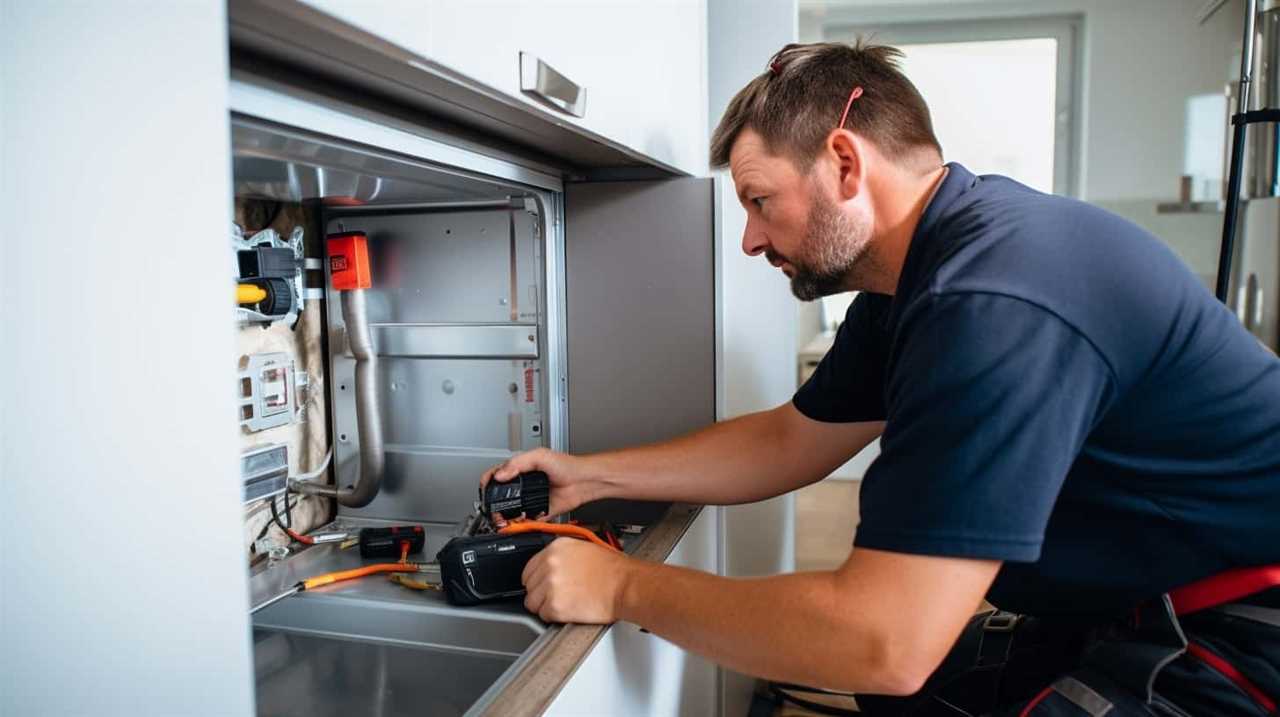
Energy labels provide valuable information about the energy usage of appliances, helping consumers make informed choices. By reading and interpreting these labels, we can easily identify the most energy-efficient options and reduce our environmental impact while saving on energy costs.
Understanding Energy Consumption
To understand appliance energy consumption, we can refer to the energy labels and interpret them accurately. Here are some key points to consider when reading and interpreting energy labels:
- Energy Efficiency Rating: Look for the energy efficiency rating on the label, typically represented by a scale or a letter grade. Higher ratings indicate better energy efficiency.
- Annual Energy Consumption: Check the estimated annual energy consumption in kilowatt-hours (kWh). This helps you understand how much energy the appliance will use over a year and compare it with other models.
- Energy Saving Tips: Energy labels often provide energy-saving tips specific to the appliance. Follow these recommendations to reduce energy consumption and save money on your utility bills.
- Additional Features: Energy labels may also include information about additional features that affect energy consumption, such as standby power consumption or energy-saving modes.
Comparing Energy Efficiency
When comparing energy efficiency, we can read and interpret energy labels to make informed decisions. Energy labels provide valuable information about the energy consumption and efficiency of appliances. By understanding and comparing these labels, we can choose appliances that are more energy efficient, saving both energy and money in the long run.
Below is a table that illustrates the different components of an energy label and what they mean:

| Component | Description |
|---|---|
| Energy Efficiency | Indicates the appliance’s energy efficiency rating |
| Energy Consumption | Displays the annual energy consumption of the appliance in kilowatt-hours (kWh) |
| Energy Savings | Provides an estimate of the potential energy savings compared to a standard appliance |
| Environmental Impact | Indicates the appliance’s impact on the environment, such as greenhouse gas emissions |
Energy Ratings and Appliance Longevity
In our experience, appliances with higher energy ratings tend to have a longer lifespan. This correlation between energy ratings and appliance longevity can be attributed to several factors:
- Improved components: Energy-efficient appliances often feature advanced technologies and higher-quality materials, which can contribute to their overall durability and longevity.
- Reduced wear and tear: Energy-saving features, such as automatic shut-off or variable speed settings, help minimize the strain on appliance components, leading to less frequent breakdowns and longer lifespans.
- Enhanced maintenance: Energy-efficient appliances often come with built-in diagnostic systems or self-cleaning functions, ensuring proper maintenance and preventing potential issues that could shorten their lifespan.
- Manufacturer commitment: Manufacturers of energy-efficient appliances typically prioritize quality and durability, offering longer warranties and better customer support, which further contributes to their longevity.
Considering the correlation between energy ratings and appliance longevity, it’s essential for consumers to consider both factors when purchasing new appliances for their homes.
Now, let’s explore the future trends in appliance energy ratings.
Future Trends in Appliance Energy Ratings
As we delve into the topic of future trends in appliance energy ratings, it is important to consider how advancements in technology are shaping the efficiency and sustainability of household appliances. The future of energy ratings lies in the development of energy-saving technologies that aim to reduce power consumption and minimize environmental impact. Manufacturers are investing in research and development to create appliances that are not only more energy efficient but also incorporate smart features to optimize energy usage. These advancements include the use of advanced sensors, machine learning algorithms, and Internet of Things (IoT) connectivity, which allow appliances to adapt to user behavior and operate at optimal energy levels. Furthermore, the integration of renewable energy sources, such as solar panels and wind turbines, into appliances is another promising trend. By harnessing the power of clean energy, appliances can become more sustainable and reduce reliance on traditional power grids.

| Future Trends in Appliance Energy Ratings |
|---|
| Advanced sensors for energy optimization |
| Machine learning algorithms for personalized energy usage |
| Integration of renewable energy sources |
| IoT connectivity for smart energy management |
| Improved energy efficiency and sustainability |
Frequently Asked Questions
Are Appliance Energy Ratings Mandatory for All Appliances Sold in the Market?
Appliance energy ratings impact consumer purchasing decisions by providing information on energy efficiency. Challenges in enforcing mandatory regulations include compliance monitoring and ensuring accurate ratings.
Can Appliance Energy Ratings Be Trusted to Accurately Reflect the Energy Consumption of a Specific Appliance?
Appliance energy ratings can be trusted to accurately reflect an appliance’s energy consumption, but they may not account for all factors. Validity depends on adherence to testing standards and the accuracy of reported data.
Do All Energy-Saving Appliances Have High Energy Ratings?
Not all energy-saving appliances have high energy ratings. While energy-saving features can contribute to a higher rating, the final rating is determined by meeting specific energy efficiency standards set by regulatory bodies.
How Often Are Energy Ratings for Appliances Updated or Revised?
Energy ratings for appliances are updated regularly to ensure accuracy and reflect advancements in technology. This frequency of updates is important because it allows consumers to make informed decisions based on the most up-to-date information regarding energy efficiency.

Are There Any Appliances That Are Exempt From Having Energy Ratings?
There are certain appliances that are exempt from having energy ratings. These exemptions are based on factors like size and type of appliance. However, this can have a significant impact on the overall energy efficiency of the appliance market.
Conclusion
In conclusion, appliance energy ratings are a valuable tool for consumers to make informed decisions about their energy usage and cost savings.
By understanding how these ratings are measured and interpreting energy labels, individuals can choose energy-efficient appliances that not only save money but also contribute to a greener future.
As the adage goes, ‘Every little bit helps,’ and choosing energy-saving appliances is a small but impactful step towards a more sustainable lifestyle.
